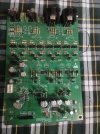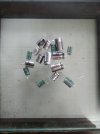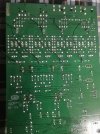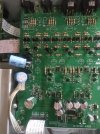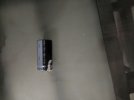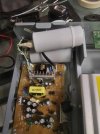This mod has a long history as long as 10 years of my listening time. In 2004 i owned a Pioneer DVD DV-373. This was followed by a used Marantz CD player CD-5400 from around 2011 til 2018. I later purchased a Marantz blueray player UD-7007 for its DAC quality and other attributes. I always did notice that some details from the UD-7007 were missing - not huge but surely yes compared to the Pioneer and the Marantz CD player. I attributed that to my listening degradation due to aging and did not bother much with this and ignored them.
I four months ago came across a video from Amir (ARC founder) where he was comparing some DAC and was mentioning briefly about Denon and Marantz cd players and was telling how the Marantz players added an unwanted HDAM discrete buffer after the Low Pass Filter there by loosing some details and being slightly compressed. Denon did not suffer from this issue as they followed the KISS principle and less was more for Denon. Since i viewed that video 4 months ago, i always wondered how to remove the discrete buffer from the Marantz and i did this today. It was quite simple - just add a jumper wire from the input of the HDAM to the output of HDAM after the coupling capacitor and you are done. As current will always flow from where the resistance to its flow the lowest - the HDAM gets bypassed without any other alteration as it would offer higher impedance than the simple wire. I used a Belden silver wire to make this jumper. I don't know if this jumper also acts like a +ve feedback from the output to the input of the HDAM - but who cares if you are getting a better outcome.
I have been listening now for 2 hours and noticed that there was nothing wrong with my ears and actually the HDAM circuitry was masking the details with the unwanted circuitry. Now i can hear all the masked details like it was in the Pioneer DVD and Marantz CD player. Now i really believe that less is more and this entire mod was done in just 20 minutes.
Thanks for looking.
I four months ago came across a video from Amir (ARC founder) where he was comparing some DAC and was mentioning briefly about Denon and Marantz cd players and was telling how the Marantz players added an unwanted HDAM discrete buffer after the Low Pass Filter there by loosing some details and being slightly compressed. Denon did not suffer from this issue as they followed the KISS principle and less was more for Denon. Since i viewed that video 4 months ago, i always wondered how to remove the discrete buffer from the Marantz and i did this today. It was quite simple - just add a jumper wire from the input of the HDAM to the output of HDAM after the coupling capacitor and you are done. As current will always flow from where the resistance to its flow the lowest - the HDAM gets bypassed without any other alteration as it would offer higher impedance than the simple wire. I used a Belden silver wire to make this jumper. I don't know if this jumper also acts like a +ve feedback from the output to the input of the HDAM - but who cares if you are getting a better outcome.
I have been listening now for 2 hours and noticed that there was nothing wrong with my ears and actually the HDAM circuitry was masking the details with the unwanted circuitry. Now i can hear all the masked details like it was in the Pioneer DVD and Marantz CD player. Now i really believe that less is more and this entire mod was done in just 20 minutes.
Thanks for looking.


